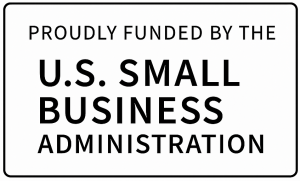Concrete has long been the backbone of the construction industry, providing the structural strength and durability required for buildings, bridges, and infrastructure. However, traditional concrete is not without its challenges, particularly when it comes to cracking, durability, and tensile strength. One solution that has gained significant traction in recent years is the use of concrete reinforcing fiber, a game-changer in modern construction practices.
What is Concrete Reinforcing Fiber?
Concrete reinforcing fibers, which are obtained from materials including synthetic, natural fibers, steel, and glass, are used in the concrete mix before setting. The increasing demand for sustainable solutions is augmenting market growth. Concerns regarding the environment are anticipated to be the prime reason for the future sales of concrete reinforcing fibers, motivating manufacturers to increase their production capacity to serve the anticipated demand for sustainable fiber-reinforced concrete solutions in the coming years.
Market Analysis Data
The global concrete reinforcing fiber market size was valued at USD 2.36 billion in 2023. The market is expected to expand from USD 2.49 billion in 2024 to USD 4.62 billion by 2032, exhibiting a CAGR of 8.0% over the study period.

Types of Concrete Reinforcing Fibers
- Steel Fibers: Steel fibers are one of the most commonly used types due to their ability to significantly enhance concrete’s load-bearing capacity and resistance to cracking. These fibers are particularly useful in industrial floors, tunnel linings, and precast concrete structures.
- Glass Fibers: Glass fibers offer excellent resistance to corrosion and are often used in architectural applications where aesthetic considerations are important. They are lightweight and ideal for thin concrete sections, such as panels and facades.
- Synthetic Fibers: Made from materials like polypropylene, nylon, and polyester, synthetic fibers are prized for their versatility and cost-effectiveness. They reduce plastic shrinkage cracks and improve impact resistance, making them suitable for residential slabs, sidewalks, and overlays.
- Natural Fibers: Derived from organic sources like coconut coir, jute, or sisal, natural fibers provide an eco-friendly alternative. While less durable than synthetic or steel fibers, they are gaining popularity in sustainable construction projects.
Benefits of Concrete Reinforcing Fiber
- Improved Crack Resistance: Fibers help mitigate both plastic shrinkage and thermal cracking, extending the lifespan of concrete structures.
- Enhanced Durability: The inclusion of fibers increases resistance to wear and tear, abrasion, and chemical attacks.
- Increased Tensile Strength: While traditional concrete is weak in tension, reinforcing fibers compensate for this limitation, reducing the need for additional reinforcement.
- Cost Efficiency: By reducing the reliance on traditional reinforcement methods like steel rebar, fibers can lower overall construction costs.
- Ease of Application: Fibers are easy to integrate into concrete mixtures, allowing for faster construction timelines.
Applications of Concrete Reinforcing Fiber
Concrete reinforcing fiber is utilized across a wide range of construction projects, including:
- Industrial Floors: For high-traffic areas that require durability and resistance to heavy loads.
- Pavements and Roads: To improve longevity and reduce maintenance costs.
- Precast Concrete Products: Such as pipes, panels, and beams, where enhanced strength is critical.
- Marine Structures: To combat the effects of corrosion in harsh environments.
- Tunnels and Mines: For increased safety and support in underground applications.
Challenges and Considerations
Despite its numerous benefits, the use of concrete reinforcing fiber does come with some challenges. Proper mixing is essential to ensure uniform distribution, as clumping can compromise structural integrity. Additionally, the choice of fiber type must align with the specific requirements of the project, including environmental factors, load conditions, and budget constraints.
Regional Insights
Asia Pacific Secures a Leading Position Impelled by Huge Infrastructure Development
Asia Pacific accounts for the largest market share and is expected to become the fastest-growing region in the future. This can be attributed to huge infrastructure development, urbanization, and industrialization. Moreover, Japan, India, and China, are dominating with respect to the demand for advanced construction materials.
Europe concrete reinforcing fiber market is slated to observe significant growth during the study period, which can be credited to tightening regulations coupled with high standards for construction quality, which boost the uptake of reinforcing fibers. In addition, considerable upgrades are needed for the region’s aging infrastructure, which includes public transport systems, bridges, and roads, which is driving regional growth.
The Future of Concrete Reinforcing Fiber
As the construction industry continues to prioritize sustainability and durability, the demand for innovative materials like concrete reinforcing fiber is expected to grow. Advances in fiber technology, including hybrid fibers and nanofibers, are opening up new possibilities for enhanced performance and reduced environmental impact. These innovations will play a crucial role in shaping the future of construction, enabling stronger, safer, and more sustainable infrastructure.
Conclusion
Concrete reinforcing fiber has emerged as a transformative solution for addressing the limitations of traditional concrete. By improving strength, durability, and crack resistance, it has become a vital component in modern construction. As the industry evolves, the adoption of advanced fiber technologies will undoubtedly pave the way for more resilient and sustainable building practices.




